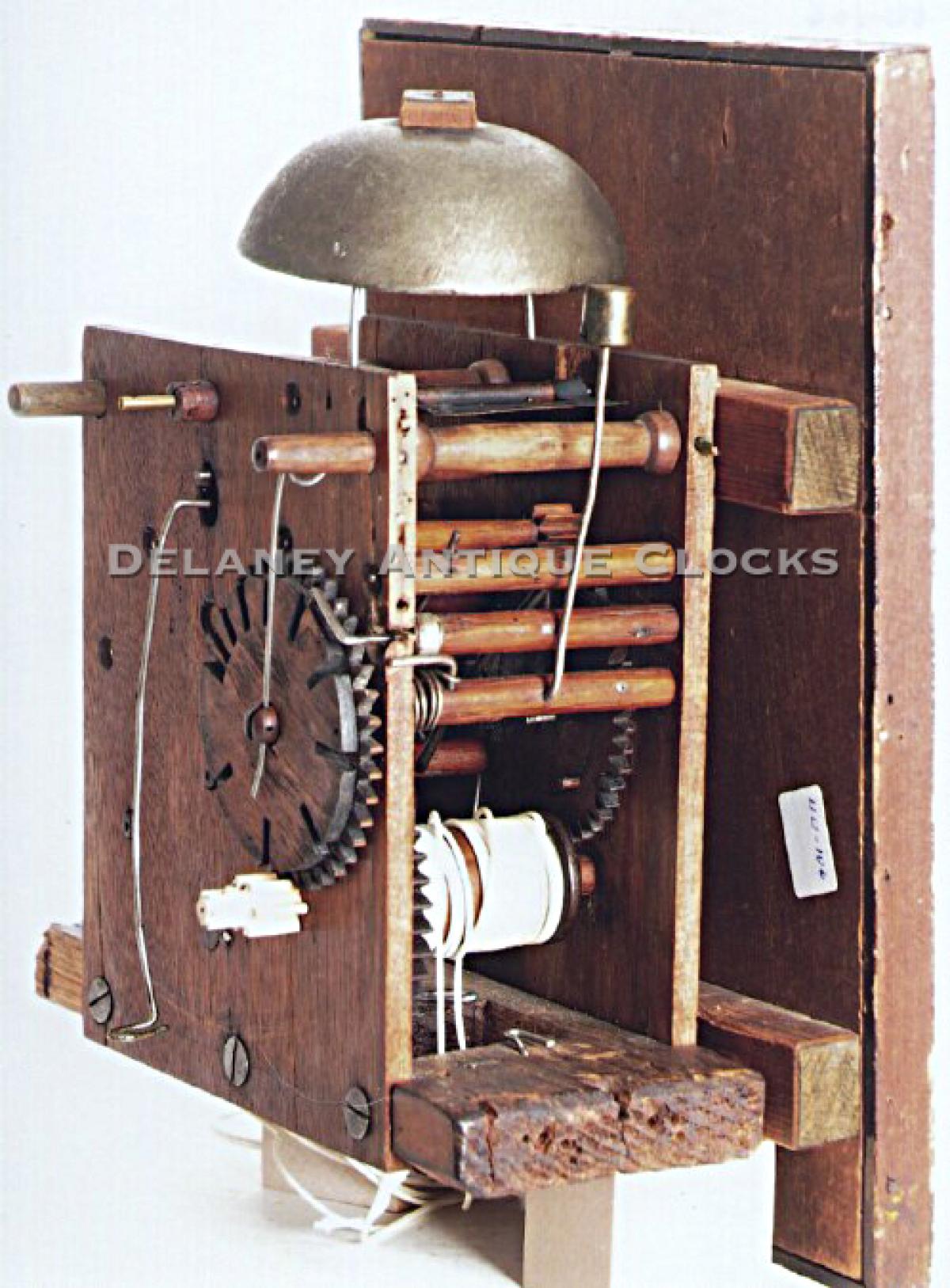Jonathan Winslow of Brookfield, Massachusetts. A wooden geared dwarf clock. UU-106
This nice country example is referred to as a "Dwarf clock." It stands a mere 47 inches tall. The case is retains an old mahoganized finish. Decorative stencils have been added to the base panel and to the waist door. The case stands up on four feet which are cut out from the base panel. The base section is trimmed with an interesting reeded molding. This decorative detail is repeated in the construction of the waist door and and bonnet moldings. The waist section is narrow and the overall proportions of the form benefit from this. The front panel doubles as a waist door and it allows one access to the pendulum and the weights. The hood or bonnet rests on the upper waist molding. The hood columns are simply turned and the top of the hood is surmounted with three wooden finials that have been gilt. A scroll top terminates in returns that are decorated with gilt florals. The dial aperture is some what unusual in that this form does not require a door or glass to protect the dial.
The rectangular shaped dial is painted onto the back of a piece of glass. As a result, the decoration and details are in excellent condition and the colors are still in remarkable condition. One should expect this to be true since the painted decoration is not easily accessible. The hands are left exposed or unprotected. They are steel and finely made.
The movement is constructed in wood. The plates and gears appear to be constructed from birch and cherry and the pinions are maple. Wooden geared clocks such as this are designed to run thirty hours on a full wind and strike the hour on the cast iron bell which is mounted above the movement. This is a compact design allowing it to be used in a small case. The movement is mounted on a seat board which is die-stamped by the Maker in large block letters. It reads, "J. WINSLOW." This clock was made circa 1820-25.
A small number of additional examples are pictured in the Horological literature. A similar clock is Pictured in "Horology Americana" written by Lester Dworetsky and Robert Dickstein on page 28. Another example can be found pictured in "The American Clock" written by William H. Distin and Robert Bishop on page 82.
Inventory number UU1-6.
Jonathan Winslow was born in south eastern Massachusetts in the town of Rochester on August 15, 1765. He was the son of Shubael and Azubah (Blogett) Winslow. He is recorded as having moved and worked in several Massachusetts towns including New Salem, Worcester, Brookfield in 1795, Palmer and Springfield. He married Elizabeth Bailey of Worcester on January 1, 1790. Jonathan died in Springfield on July 20, 1847.
It was perviously thought that he served his clockmaking apprenticeship with the Cheneys in East Hartford, Connecticut. This family is now well known for being primarily wooden movement clockmakers. This information is now disputed in Philip Morris's new book, \"American Wooden Movement Tall Clocks 1712 - 1835\" due to the lack of similarity in construction styles. We have seen and owned several Winslow dwarf clocks over the last forty-five years. A percentage of these clocks are die-stamp on the seatboard by the Maker. The dwarf clock case form appears to be his most common form. There might be less that a dozen of these dwarf cases pictured in the horological literature.














